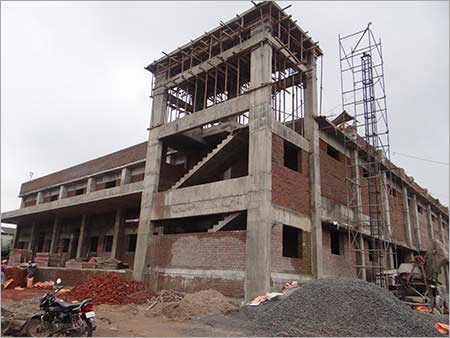Table of Contents
Have you ever thought about how to classify rocks for engineering purposes??
Aggregates are one of the most important materials in civil engineering. Basically, Construction aggregate, or simply “aggregate”, is a broad category of coarse to medium grained particulate material used in construction, including sand, gravel, crushed stone, slag, recycled concrete and geosynthetic aggregates.
They give the body to the concrete, seducing change and affect the economy. These act as fillers or volume increasing components on the one hand and are responsible for the strength, hardness, and durability of the concrete on the other hand.
The classification of aggregates is generally based on their geological origin, side, shapes, Unit Weight etc.
Classification based on geological origin
Natural Aggregates:
These aggregates are generally obtained from natural deposits of sand and gravel for from queries by cutting rocks. Two of the cheapest among them are the natural sand and gravel. A costly natural aggregate is Granite.
Artificial Aggregate:
The production of artificial aggregate generally aims to manufacture a material with a strong surface layer and good structural performance, though also with higher porosity and associated lightweight characteristics. The most widely used artificial aggregates are cleanly broken bricks, air-cooled blast furnace slag and sintered fly ash.
Classification based on size:
According to size, aggregates are classified into two types. They are fine aggregate and coarse aggregates
Fine Aggregate:
Aggregate is the granular material used to produce concrete or mortar and when the particles of the granular material are so fine that they pass through a 4.75mm sieve, it is called fine aggregate. It is widely used in the construction industry to increase the volume of concrete, thus it is a cost-saving material and you should know everything about the fine aggregate size, its density and grading zone to find the best material.
| Fine aggregate | Size variation |
| Coarse Sand | 2.0mm – 0.5mm |
| Medium sand | 0.5mm – 0.25mm |
| Fine sand | 0.25mm – 0.06mm |
| Silt | 0.06mm – 0.002mm |
| Clay | <0.002 |
Coarse Aggregate:
Coarse-grained aggregates will not pass through a sieve with 4.75 mm openings (Sieve No. 4).
Those particles that are predominantly retained on the 4.75 mm sieve and will pass through the 3-inch screen, are called coarse aggregate. The coarser the aggregate, the more economical the mix. Larger pieces offer less surface area of the particles than an equivalent volume of small pieces.
| Coarse aggregate | Size |
| Fine gravel | 4mm – 8mm |
| Medium gravel | 8mm – 16mm |
| Coarse gravel | 16mm – 64mm |
| Cobbles | 64mm – 256mm |
| Boulders | >256mm |
Classification based on shapes:
The shape of the particle of aggregates influences the properties of fresh concrete more than that of hardened concrete. Depending upon the particle shape, the aggregates may be classified as rounded, irregular or partly rounded, angular or flaky.
Rounded Aggregate:
The aggregate with rounded shapes has a minimum word ratio ranging from 32 to 33%. It gives the minimum ratio of surface area to the volume, thus requiring minimum cement paste to make good concrete. However, being rounded, this type of aggregate gives less strength.
Irregular or Partly Rounded Aggregate:
The irregular or partly rounded aggregates are shaped by attrition having rounded edges. They have voids about 36% and require more cement paste as compared to rounded aggregate. But it gives more strength as compared to rounded aggregate.
Angular Aggregate:
Angular aggregates have a higher specific surface area than the smooth rounded aggregate. With a greater specific surface area, the angular aggregate may show higher bond strength than rounded aggregates. Also, angular aggregates exhibit a better interlocking effect in concrete that contributes to the strength of concrete. Aggregate with angular particles has a maximum percentage of voids ranging from 38 to 40%.

Flaky Aggregate:
When the aggregate thickness is small when compared with the width and length of that aggregate it is said to be flaky aggregate. Or in the other, when the least dimension of aggregate is less than the 60% of its mean dimension then it is said to be flaky aggregate.

Elongated Aggregate:
When the length of aggregate is larger than the other two dimensions then it is called elongated aggregate or the length of aggregate is greater than 180% of its mean dimension.
Classification based on Unit Weight:
The aggregates can also be classified according to their unit weight as normal weight heavy, weight and lightweight aggregates.
Normal Weight Aggregate:
The commonly used aggregates that is sand and gravel, crust rock such as granite, basalt, quartz which have a specific gravity between 2.5 to 2.7.
Heavy Weight Aggregate:
Weight aggregates such as Baryte (or Barite) (specific gravity – 4.6 to 4.8), Hematite (specific gravity – 4.9 to 5.3), Magnetite (specific gravity – 4.2 to 5.2), Ferro-phosphorus (specific gravity – 5.8 to 6.8) are the manufacturer of the heavyweight of concrete.
Light Weight Aggregate:
Lightweight aggregates up to 12 KN/m3 are used to manufacture the structural concrete and masonry blocks to the production of self-weight of concrete
I hope this article will help you. You may also want to see my other post from my Blog. If I have missed anything here, please let me know about that in the comment below this post.
Share it with your friends.
Happy Learning.
If you liked this article, then please help me to share this article with your friends through Facebook, Twitter, WhatsApp or Instagram. You can also find us on Facebook, Twitter, Instagram, Telegram Channel, YouTube Channel and Pinterest. Also, Subscribe to our mailing list to get new post update from us. And, do me a favour, if you find this post helpful, rate a 5 star below-




